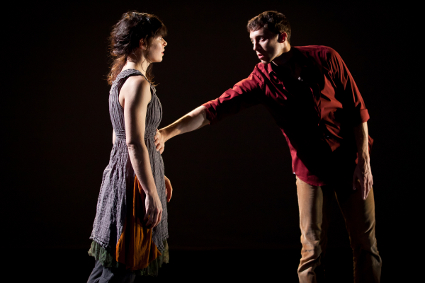Alexandra Beller’s evocative “other stories”

By Carrie Stern
Alexandra Beller is interested in stories, in memory, in how dancers learn and interpret movement. The show “other stories,” seen at Joyce SoHo in mid-April, took dancers’ real life stories and teased them apart, abstracted them and recycled them into imitative, evocative, interpretive movement phrases. Beller describes this work as an “articulation of personal divulgences” addressing how the “interplay of memory and emotion” shape how we tell personal stories.
“other stories” is designed for what amounts to two casts, each charged with a different but related aspect of the overall work. Think melody and harmony. This construction, more than the movement itself, is the key to the dance’s intrigue. The duration of the work has grown since an in-progress version performed in 2010 at Dance New Amsterdam. The evening length allowed Beller to indulge (in a good way) the dense layers of movement and the surprising entrances and exits she favors.